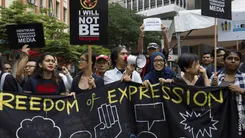

Governments in autocratic and autocratizing contexts may use anti-fake news laws to discredit critical civil society actors as agents of “disinformation” and punish them. Through comparative and cross-learning insights derived from computational, archival, and field studies; legal text analysis; and stakeholder inputs, we map patterns and trends of anti-fake news lawfare in the six focus countries and the civil society responses against the autocratic use of disinformation laws.
The data collected comprises three components: legal measures, governments’ use of these measures against civil society members, and the latter’s pushback strategies. Further, the tracker also comprises of stories of pushback by targeted civil society actors and a strategic handbook on pushback strategies. These are based on data derived from first-hand interviews with targets, civil society stakeholders, and government representatives. These are substantiated by publicly available media and legal reports.
Fake news implies false information disseminated as factual news with a malicious intent to deceive, mislead, or confuse. We define “anti-fake news laws” in terms of legal measures, specifically legislation; decree or executive order; or ministerial announcement, directive or regulation, which are passed and implemented to curb fake news. We define "anti-fake news lawfare" (AFNL) as the weaponised use of anti-fake news laws to target, harass, and/or persecute civil society actors who criticise and/or oppose government actors. We focus on cases of criminalisation of journalists, academics, and civil society activists - who are critical information actors- by governments.

